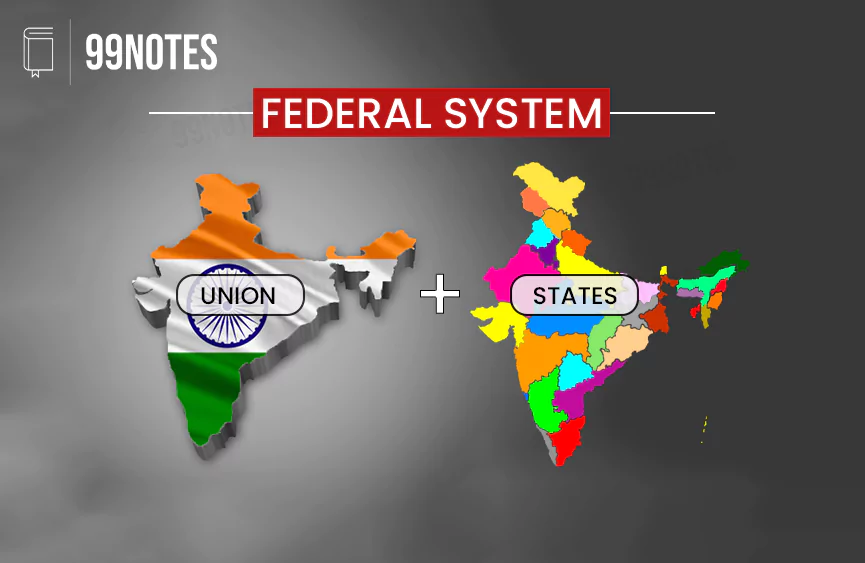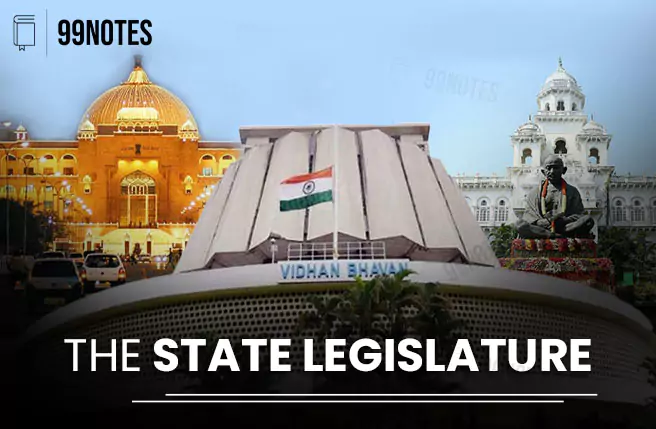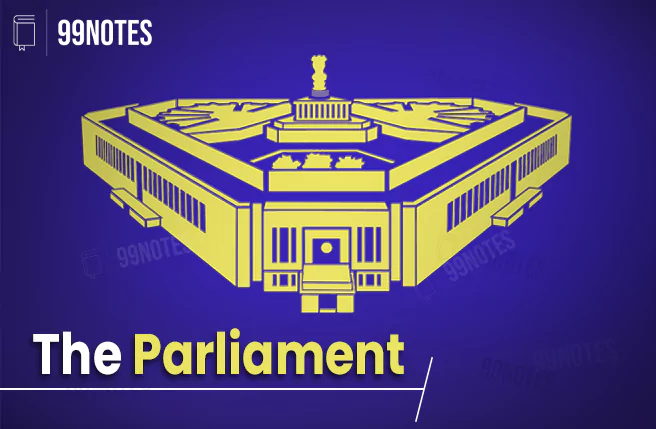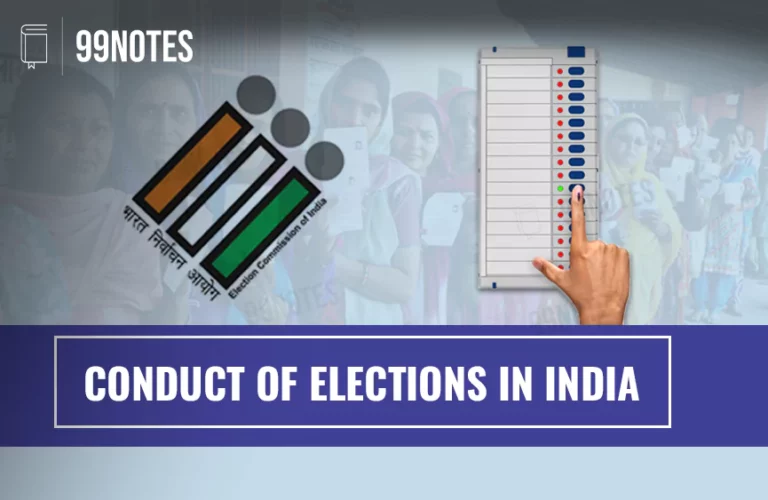Federal System
Federalism is a governance mechanism in which the state’s sovereignty is distributed between different units, i.e. centre, state and local bodies. It is a vertical distribution of power, i.e. division of power between different layers of government.
It seeks to define the relationship between the central government and regional governments. It institutionalises political cooperation and collective co-existence.
A federation is a political arrangement made through a contract or agreement between various units. These units are known by different names: states in the USA and India, Cantons in Switzerland, Republics in Russia and Provinces in Canada.
Usually, there are two layers of government in the federal system;
- One is responsible for issues of common interests such as defence, communication, etc.,
- And the other layer at the provincial level is responsible for the day-to-day administering of their states.
A federal system serves a dual purpose:
- Safeguarding and promoting the unity and integrity of the country,
- Facilitates the accommodation of regional diversities.
This system also has utility in providing efficient administration.
How is the Federal system different from the Unitary system?
- The relationship between the Union and lower units can be of two types: Unitary and Federal.
- In a Unitary type system, all authorities are vested in the Union government, and states either do not exist or derive their power from the Centre itself.
- In a federal system, the Constitution divides power between the Centre and the lower units.
- Countries like Britain, Japan, France, Italy, Spain, etc., have unitary types of government, while the USA, Canada, Russia, Australia, have a federal model of government.
|
Comparisons of Federal and Unity Features |
|
| Federal | Unitary |
| Dual government (National and regional government) | Single government (It may create regional governments) |
| Supremacy of Constitution | May be Supreme (Like India), may not be (Britain) |
| Written Constitution | It may be written (France) or unwritten (Britain) |
| Division of power between Centre and state | No division of powers |
| Rigid Constitution | It may be rigid (like in France) or flexible (like in Britain) |
| Bicameral Legislature | Maybe bicameral (Britain) or Unicameral (China) |
| Independent Judiciary | It may be independent or not independent |
General Characteristics of the Federal system
- Multiple Tiers of Government: In the federal system, the same citizens are governed by multiple tiers of government, i.e. at the national, province, and local levels (municipalities).
- Multiple Jurisdictions: Each tier has its own jurisdiction in particular areas of legislation, taxation, and administration.
- Written Constitution: A written Constitution serves as a contract between the Union and the states. The jurisdiction of respective tiers of government is clearly specified in the Constitution.
- No Unilateral Change in the Federal Scheme: The federal provisions of the Constitution cannot be amended unilaterally. It requires the consent of the constituent states.
- Independent Judiciary as Arbiter: The judiciary has the authority to interpret the Constitution and can decide on the powers of different tiers of the government. It decides the disputes between the Centre and states as well as between different states.
- Financial Autonomy: Sources of revenue for each tier of government are clearly specified.
Types of Federal Systems
The federations can come into existence in two ways: one is known as the ‘Coming Together Federation’, and the other as the ‘Holding Together Federation’.
1. Coming together Federations:
In nations like the United States, it was the states that pooled their sovereignty while retaining their identity in order to increase their security. This route involves independent states coming together to form a bigger state or country.
In this type of federation, constituent states have equal powers vis-à-vis the Centre. Such a federation is an ‘Indestructible union of indestructible states.
Switzerland and Australia are other examples where different states came together to make a nation.
2. Holding together Federations:
India is a holding-together federation.
This route involves the devolution of powers between the provinces and the national government. It is an ‘Indestructible union of Destructible states.
In this type of federation, usually, the national government wield more power, and the constituent states have unequal powers with respect to each other, which means some states have special powers. For example, in India, special provisions for North-Eastern states are under schedule 6.
We can say that an extensive unitary state can be converted into a federation by granting autonomy to the provinces to promote regional interests and boost national integrity.
Other Examples – Canada, Belgium, Spain, etc.
Comparison of Coming Together and Holding Together Federations
| Coming together Federations | Holding together Federations
|
|
| Origin | This route involves independent states coming together to form a bigger state or country. | This route involves the devolution of powers by a central government to the lower units. |
| Objective | States pool their sovereignty while retaining their identity and increasing their security. | Nation decides to create federal units to protect local identity and better administration. |
| Type | ‘Indestructible union of indestructible states’ | ‘Indestructible union of Destructible states’ |
| Example | The United States (oldest), Switzerland, Australia, etc. | India, Canada, Belgium, Spain, etc. |
Federalism in the Indian Constitution
The Constitution of India provides for a federal structure. The circumstances responsible for adopting a federal system of government were the following:
- The vast size of the country.
- Socio-cultural diversity.
- Accommodation of Princely states.
Historical Background
- Initially, the Government of India under British rule was unitary in nature. However, after the First World War, the government realised that a fully unitary system of governance was not suitable for the Indian administrative system.
- ‘Diarchy’ introduced in the Government of India Act, 1919, is considered the first step towards federalism.
- The Government of India Act 1935 provided explicitly for ‘provincial autonomy’.
Nature of Indian Federalism
- The Constitution makers did not adopt the true form of federalism; they modified it and incorporated some unitary features suitable for Indian conditions.
- The Indian Constitution does not use the term ‘federation’. Article 1 mentions the term “union of states”. According to BR Ambedkar, it means two things:
-
- It is not the result of an agreement among states.
- The states have no right to secede from the Union.
The federation is a union because it is indestructible and maintains the unity of the country.
- The Indian federal system is based on the Canadian Federation. It is similar to the Canadian model in ways such as:
-
- The Canadian Constitution also uses the term ‘Union’.
- Centralising features such as residuary power with the Union, the appointment of state Governor by the Union,
Federal Features of the Indian Constitution
Indian federalism has been called “Quasi-federal” by KC Wheare due to the adoption of a modified federal structure that has a unitary bias. Here, we will look at the federal features of the Indian Constitution:
- Written Constitution: Both the constituents of the federal structure derive their power from this written Constitution. It provides clarity and avoids misunderstandings between the Union and states and between two states.
- Rigidity in the Constitutional Amendment process: The Indian Constitution has provided a relatively rigid amendment process. Those amendments that seek to alter the federal scheme need to be passed by a special majority and must be ratified by half of the state legislature.
- Division of Power: The Constitution of India, in schedule 7, provides 3 lists which contain subjects of administration;
- Union List: Only the Union government can make laws on these subjects.
- State List: Only the state government has the authority to legislate on these subjects.
- Concurrent List: Both the Union and the state can make laws, but in case of conflict, the central law will prevail.
The residuary subjects (subjects that do not feature in these lists) are dealt with by the Union government.
- Independent judiciary: Independent judiciary establishes the supremacy of the Constitution, which is integral to the successful operation of a federal structure.
- The Constitution has provided the authority of judicial review to the Supreme Court and High courts, which means the courts can strike down constitutionally invalid laws and rules made by the executive and legislature.
- The Court has also provided security of tenure, fixed service conditions, and a fair removal process to the judges to ensure their independence. Moreover, their remunerations are charged on the consolidated fund of India, which does not require the approval of Parliament.
- Bicameralism: Bicameralism refers to the provision of two houses in the The lower house (Lok Sabha) consists of representatives directly elected by the people of India. The Upper house (Rajya Sabha) represents the states, which is why it is called the Council of States.
Unitary Features of the Constitution
Indian federal structure has a unitary bias. We will discuss the unitary features below:
- Use of “Union” in place of “Federal”: The Constitution of India describes India as a “Union of states“. The Constitution has conspicuously avoided the term “federal” to denote that the Indian federation is not the consequence of agreement among the states, like in the USA.
- Single Constitution: There is no separate Constitution for states. Both units derive their authority from the same Constitution. However, states do not have much say in Constitutional amendments. It was done to ensure uniformity in adherence to laws.
- Single Citizenship: Despite Dual Polity, the Constitution only provides for National citizenship. States do not offer their separate citizenship. This differs from countries with federal structures like the USA, Australia, and Switzerland, which provide dual citizenship to their citizens. This was done so that subnational identities do not lead to secessionism.
- Parliament’s dominance: The Constitution has provided unsymmetrical powers to the Parliament in the following matters:
-
- State reorganisation: The Constitution empowers the Parliament (Article 3) to establish and admit new states. It can also alter the boundaries of the state, merge two states, and rename the state. The state has no real authority in such matters except for providing opinions, which may or may not be accepted.
- Article 253: This allows the Parliament to make law for the whole or any part of the country to give effect to international treaties.
- Article 249: The Rajya Sabha can transfer any state subject to Parliament.
- Centre’s Supremacy: The Centre has a strong political and financial position as compared to states.
- Appointment of Governor: On behalf of the Centre, the President appoints state governors, who act as the Centre’s agent. The state governments have effectively no say in the appointment and removal of the Governor. S/he functions as an agent of the Centre in the state.
- Appointment of High Court judges: The President appoints the High Court judges who come under the jurisdiction of states.
- All India Services: The provision of All India Services dilutes the federal scheme in the Constitution. The state governments have minimal authority regarding All India Services. The Rajya Sabha can also create a new all-India service by passing a resolution by a 2/3rd majority.
- President’s veto over state legislation: The Governor can reserve certain types of bills for the consideration of the President. The President has an absolute veto over state legislation. The President can withhold assent not only in the first instance but also in the second stance.
- Emergency Provisions: Article 352, 356, and 360 of the Indian Constitution provides for emergency powers when there is a threat to the nation’s sovereignty or breakdown of the “constitutional machinery” in a State or financial instability and bankruptcy of any government, respectively.
- Integrated Election Machinery: Both general elections (Central) and elections of state legislative assemblies are conducted by the Election Commission of India. The states have no say in either appointment or removal.
- Integrated State Machinery: The Comptroller and Auditor General of India is responsible for the accounting and auditing of both centres as well as state finances. However, states do not have any say in the appointment and removal of the CAG. Other Central agencies that have jurisdiction in the state are the Central Bureau of Investigation, the National Investigative Agency,
Critical Evaluation of the Federal System
It is clear that as far as Constitutional provisions are concerned, there is a clear tilt of power towards the Centre. This was acknowledged by BR Ambedkar when he said, “Though India is a federal Constitution… yet the Constitution avoids the tight mould of federalism and could be both unitary as well as federal according to the requirement of times and circumstances”.
In post-independent India, the need for planned development, national integration and maintenance of law and order resulted in considerable centralisation of powers. The single-party rule(Congress rule) for a long time also contributed to the increasing preponderance of the Centre.
The criticisms of the Indian Federal system are as follows:
- Not a true Federation: Constitutional expert KC Wheare described the polity of India as “quasi-federal”.
- Asymmetric Fiscal Federation: Critics like K Santhanam argue that the unitary bias in Indian federalism goes beyond the Constitutional Provisions. The vast financial powers of the Union, the state’s dependence on grants and the dominance of planning machinery are living proof of that. Ivor Jennings calls it a federation with a strong centralising tendency.
Appraisal of Indian Federation:
However, some Constitutional experts do not concur with the opinions given above:
- Indian Constitution ensures a Federation: Dr BR Ambedkar stated that the basic principle of federalism is that the executive and legislative authority is partitioned between the Union and states by the Constitution itself and not by a Parliamentary law. This is what The Indian Constitution does.
- Paul Appleby describes the federal characteristics of the Indian Constitution as extremely federal.
- Bargaining Federalism: Morris Jones calls it “bargaining federalism”. India follows a system wherein a cooperative interaction occurs between states and the Centre.
- Cooperative Federalism: Granville Austin calls it “cooperative federalism”. Though it has a strong centre, it doesn’t make states weak and does not reduce them to administrative agencies of the central government; it is a new kind of federalism formed to meet the peculiar needs of India.
Trends that reflect the federal spirit in Indian Politics
Indian states have in the past fiercely defended their rights in various fields, which demonstrates the federal powers and Independence enjoyed by the states in the Indian Constitution:
- Territorial disputes between states (Assam-Meghalaya, Maharashtra-Karnataka)
- River and water disputes between states (Kaveri water dispute)
- Emergence and dominance of regional parties (TDP, DMK, AIDMK, SP, BRS etc.)
- Assertion of autonomy by states (Tamil Nadu, Punjab, North-Eastern states).
Further, in SR Bommai’s case, the Supreme Court ruled that the Constitution is federal and federalism is the basic feature of the Constitution under the doctrine of basic structure.
| Cooperative-Competitive Federalism |
| The concept of Cooperative-competitive federalism has evolved in the present NDA government. Besides cooperation, it envisages healthy competition among states regarding Sustainable development goals and other developmental indicators, particularly developed by the NITI Aayog. |





![Centre State Relations- Legislative, Administrative, And Financial [Upsc Notes] | Updated November 21, 2024 Centre State Relations- Legislative, Administrative, And Financial [Upsc Notes]](https://99notes.in/wp-content/uploads/2023/10/central-state-relation-featured-768x500.webp)


